One of the best things about Dublin is that you’re never too far away from a peaceful, beautifully manicured park to have a wee stroll, crash out on the lawn, or enjoy the history and the surroundings.
Although you’re in the center of a European capital city, there are plenty of parks and green spaces to find serenity in the midst of the hustle and bustle of Dublin.
Not only are the parks beautiful but they’re also historic! As with almost every corner of the city, there is a layer of history where ever you look.
Here are just five of the green historical sanctuaries around Dublin ...
Merrion Square, Dublin 2
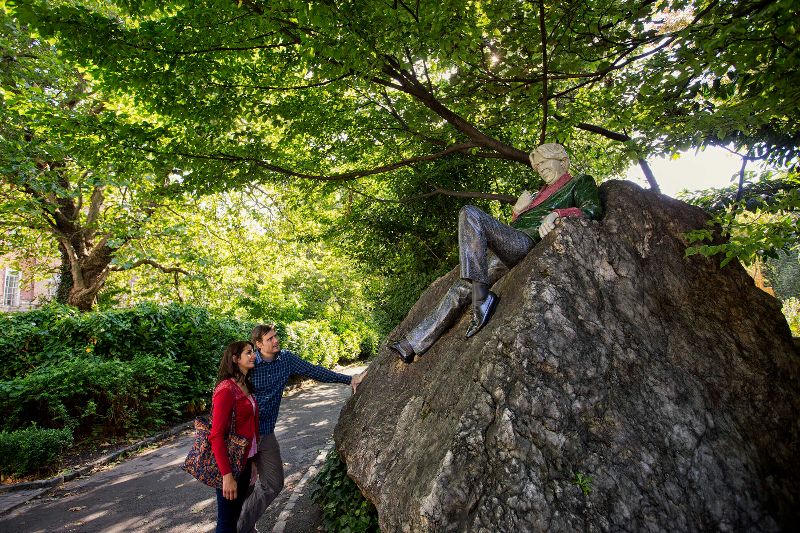
The Oscar Wilde statue in Dublin's Merrion Square. (Ireland's Content Pool)
Merrion Square, which refers to the houses surrounding as well as the park, is a Georgina square that was laid in 1762 and was completed by the 19th century.
On the west side of the square, you find Leinster House (the seat of the Irish Government), the Natural History Museum (also known as “The Dead Zoo” by locals), and the National Gallery.
Although most of the houses around the square are now used for office accommodation they have a rich history. W.B. Yeats lived at number 82 and Daniel O’Connell at number 58.
The park contains a statue of Oscar Wilde as he lived at number one Merrion Square from 1855 to 1876.
You can learn more about Merrion Square here.
The Garden of Remembrance, Parnell Street, Dublin 1
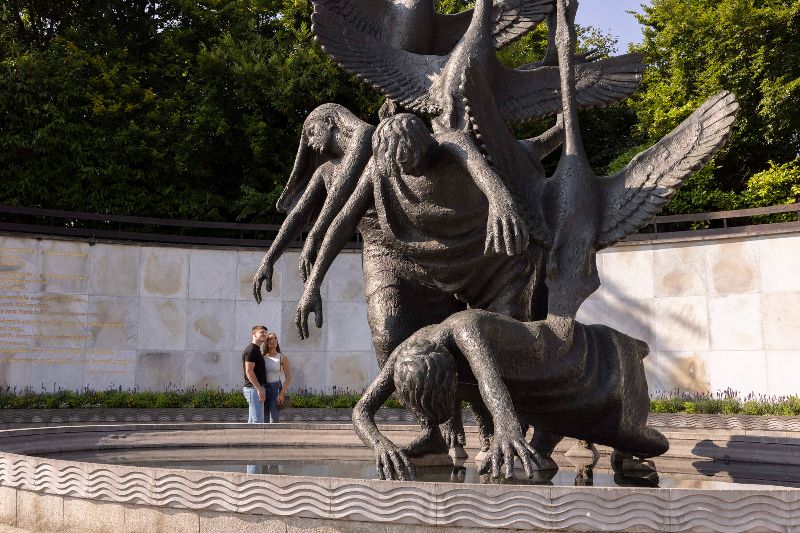
The Garden of Remembrance. (Ireland's Content Pool)
Right at the top of O’Connell Street on the north side of the River Liffey is the Garden of Remembrance, which is dedicated to the memory of “all those who gave their lives in the cause of Irish Freedom."
The gardens commemorate those who lost their lives in the various uprising throughout Ireland’s history including the 1803 rebellion of Robert Emmet, the 1848 rebellion of Young Ireland, the 1867 rising of the Fenian Brotherhood, the 1916 Easter Rising of the Irish Volunteers and the Irish Citizen Army, and the 1919-21 Irish War of Independence of the "Old" IRA.
Dáithí Hanly designed the gardens in the shape of a sunken crucifix. The focal point of the garden a statue of the Children of Lir, to symbolize rebirth and resurrection was added in 1977.
You can learn more about the Garden of Remembrance here.
Iveagh Gardens, Clonmel Street, off Harcourt Street, Dublin 2
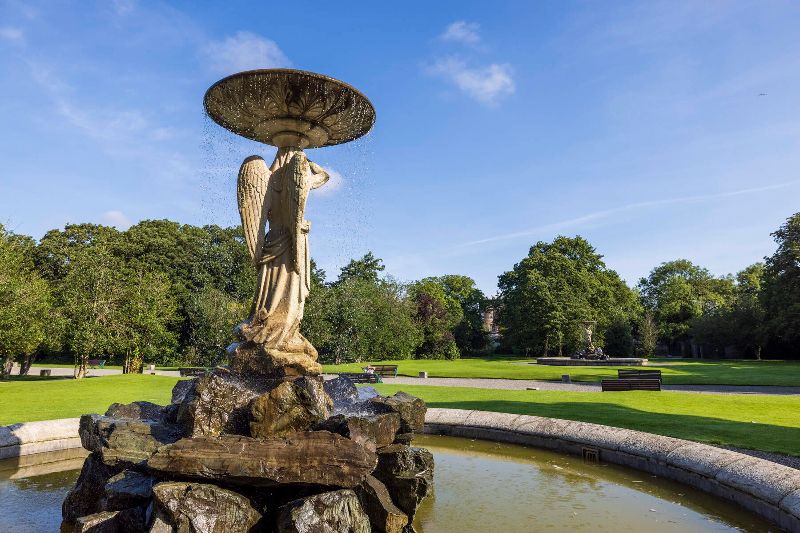
Iveagh Gardens. (Ireland's Content Pool)
Known as Dublin's "Secret Garden," the Iveagh Gardens were designed in 1865 by Ninian Niven, the history of the park dates back some three centuries.
From modest beginnings as an earl’s lawn, the gardens went on to host the Dublin Exhibition Palace in 1865. Many of the original landscape features are still in place or have been restored and conserved since 1995. These include the yew maze, the rosarium, and the fountains. The cascade in particular is a stunning spectacle in summer.
You can learn more about Iveagh Gardens here.
The Castle Gardens, off Dame Street, Dublin 2
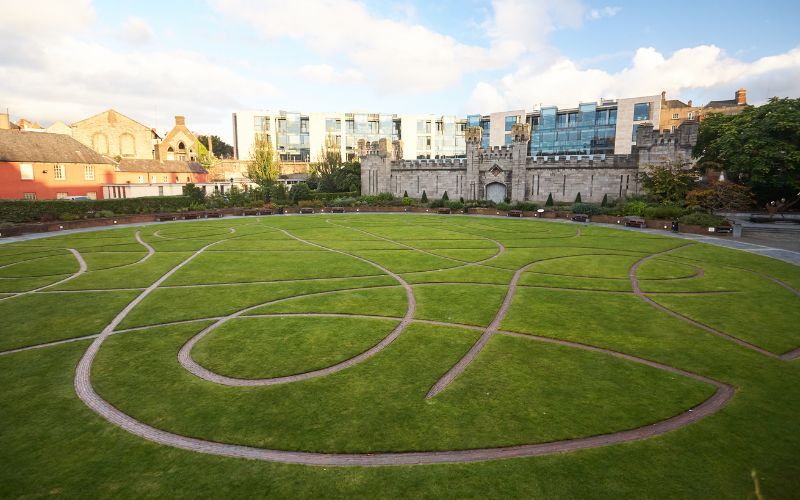
Dubh Linn Garden at Dublin Castle. (Getty Images)
Located at Dublin Castle, the aptly named Castle Gardens are situated immediately south of the Chapel Royal and the State Apartments within an enclosing stone wall.
The gardens are entered through wrought-iron gates of Celtic-inspired spirals. Beyond a ‘four seasons’ garden lie four smaller gardens, one at each corner of the site, all of which contain specially commissioned works of sculpture.
At the heart of the gardens is the Dubh Linn Garden, where patterns representing sea serpents are cut into the lawn, which is on or near the site of the original dubh linn or ‘black pool,' where the Vikings harbored their ships and set up a trading base. It was this pool that gave its name to the city: Dublin.
You can learn more about the Castle Gardens here.
Read more
Herbert Park, Ballsbridge, Dublin 4
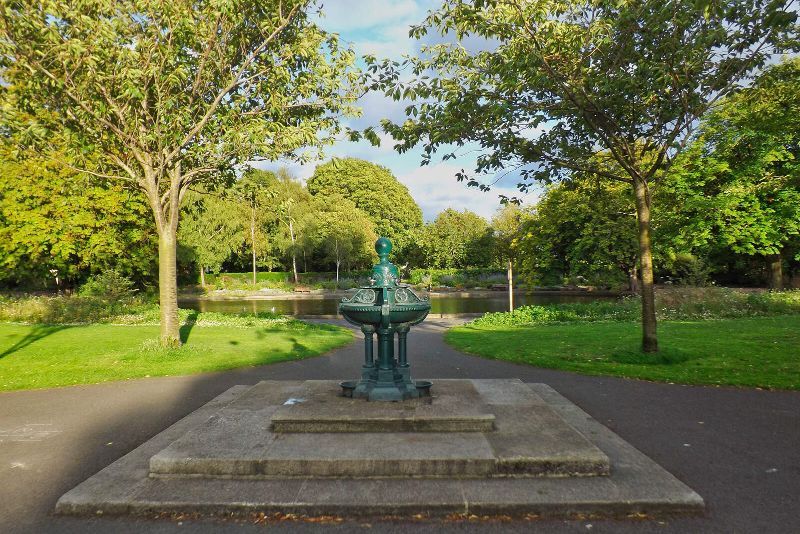
Herbert Park. (Ireland's Content Pool)
Dating back to the thirteenth century, Herbert Park in Ballsbridge currently stands on was previously known as the Forty Acres.
For centuries, the park was part of the Fitzwilliam Estate until it was inherited by the 11th Earl of Pembroke in 1816. In 1903, the earl gave the site to Pembroke Urban District Council for development as a public park. The park is named after his father, Sidney Herbert (1810-1861).
The famous Dublin International Trades' Exhibition was held on the site in 1907, housing exhibits from across the British Empire (including a complete Somalian village). The existing duck pond was constructed for the exhibition to house the 'Canadian Waterchute', but little else remains of the original buildings. The park was taken over by Dublin Corporation in 1932.
Today, Herbert Park features football pitches, tennis, boules and croquet courts, a duck pond and a playground, as well as The Hive where special events and activities are hosted.
You can learn more about Herbert Park here.
*Originally published in 2010. Last updated in 2023.
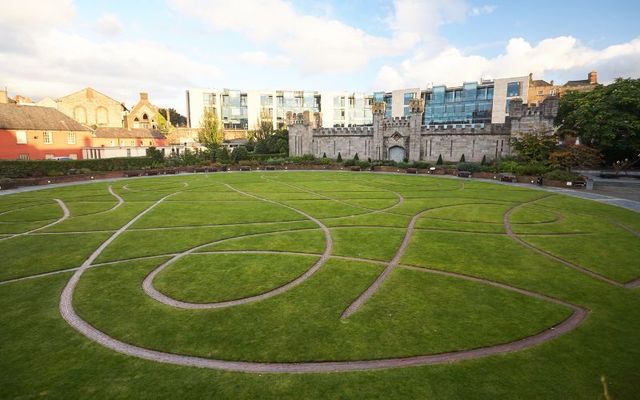
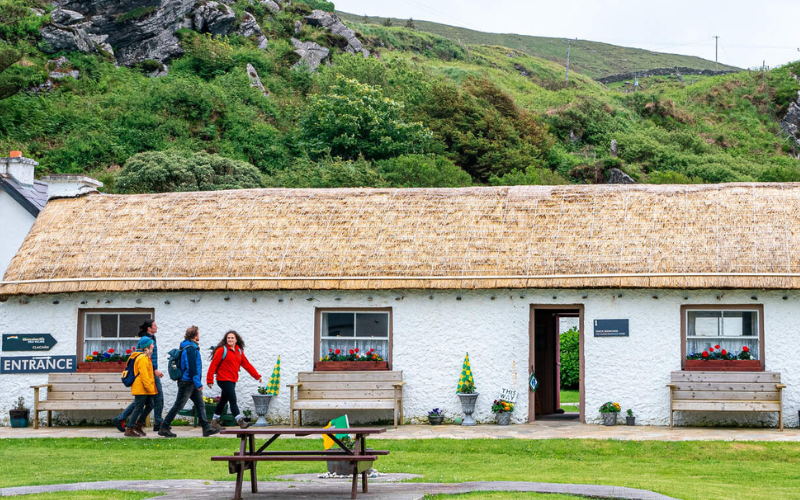

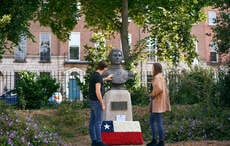
Comments